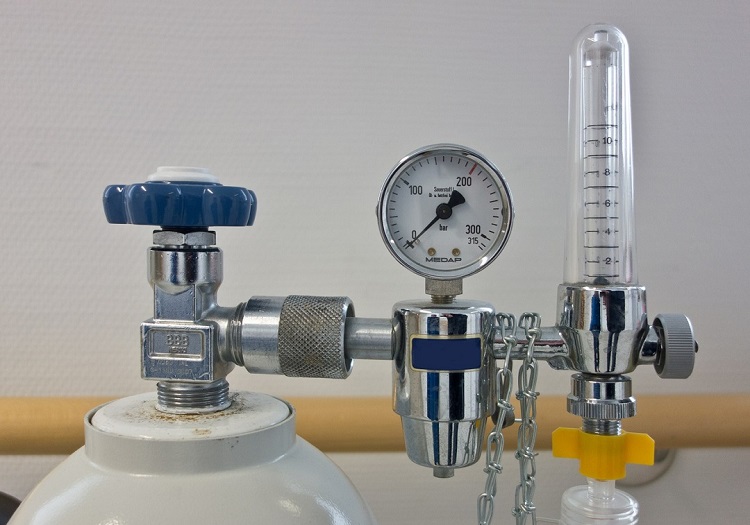In abrasive jet machining (AJM), pressurized high velocity gas is used to accelerate tiny abrasive particles and a nozzle the gas-abrasive mixture to strike the work surface at a particular angle from a specific distance for gradually eroding material. Pressurized gas is usually supplied by an air compressor fitted with filter-cum-drier unit to eliminate steam and dust. Such gas, which carries away abrasive particles and accelerates it, is known as carrier gas. Along with pressure, the composition and flow rate of this carrier gas are influential factors that can affect quality of machined surface.
Commonly used carrier gases in abrasive jet machining (AJM)
- Clean and dry air
- Commercially pure carbon di-oxide (CO2)
- Commercially pure nitrogen (N2)
- A mixture of CO2, N2, O2 and He in different proportions.

Why pure oxygen is not used as a carrier gas in AJM?
Pure oxygen is not used as a carrier gas in abrasive jet machining (AJM) because of the following reasons.
- It can quickly oxidize the work surface.
- It is inflammable.
- It is costlier.
Many engineering metals are sensitive to oxygen and they form metal oxides when continuously remain in contact with oxygen. For example, oxygen can oxidize ferrous metals and produce iron oxide (Fe2O3). Oxygen also affects various other metals, such as aluminum (creates hard brittle alumina layer—Al2O3), titanium, copper, etc. These oxides are hard, brittle and have entirely different properties than parent metal. Thus formation of oxide layer may degrade material removal rate (MRR). It may also result in poor surface quality and inaccuracy as the process parameters for particular work material are hardly compatible for its oxide. By reducing the proportion of oxygen in carrier gas, the tendency of oxide formation can be reduced.
Besides oxide formation, oxygen is highly inflammable. Also pure oxygen cylinder is costlier than pure nitrogen. Air is most economical in this sense. Due to these reasons use of pure oxygen as a carrier gas is avoided; instead, dust free air, nitrogen or carbon di-oxide is used.
References
- Book: Nontraditional Manufacturing Processes by G. F. Benedict (Manufacturing Engineering and Materials Processing-19).
- Book: Unconventional Machining Processes by T. Jagadeesha (I. K. International Publishing House Pvt. Ltd.).